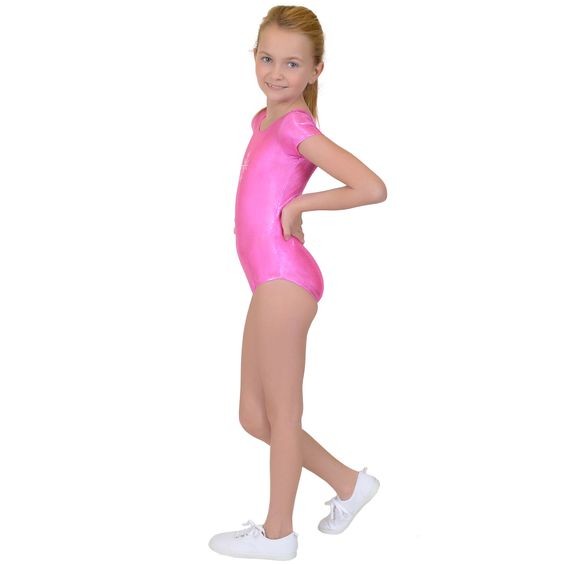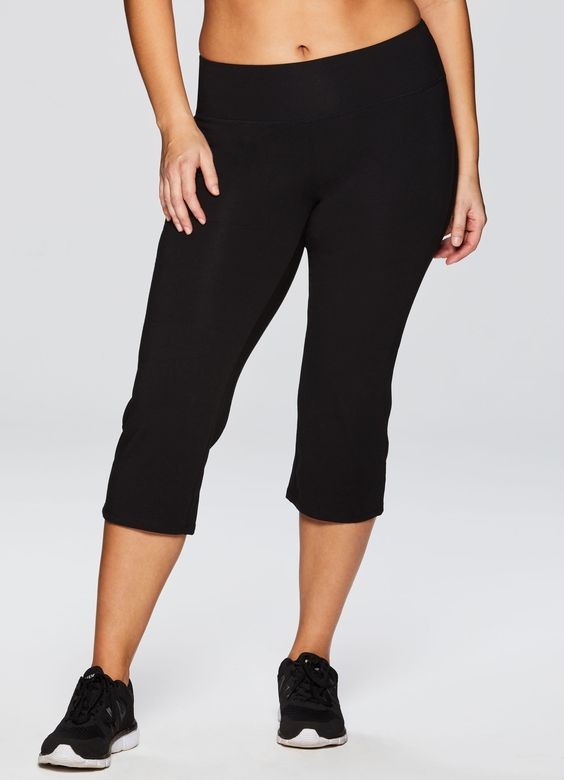What Is Spandex? Explore the versatile world of spandex fabric with WHAT.EDU.VN, uncovering its definition, diverse applications, and remarkable benefits in the textile industry. Discover how this synthetic fabric enhances clothing and various other products with its unique elasticity and resilience, and find answers to all your questions about stretchable materials and their impact on fashion and function with our free question answering service. Let’s dive into the world of elastomeric fibers and performance fabrics.
1. Spandex: Unveiling the Stretchy Secret
Spandex, also known as elastane or Lycra, is a synthetic fiber celebrated for its exceptional elasticity. Unlike natural fibers, spandex is a man-made polymer, a long chain of molecules that gives it remarkable stretch and recovery properties. This means it can stretch significantly and then return to its original shape without sagging or losing its form.
1.1. The Science Behind the Stretch
Spandex’s elasticity stems from its unique molecular structure. It’s a polyether-polyurea copolymer, meaning it’s composed of repeating units of polyether and polyurea. These units are linked together in a way that allows the fibers to stretch and bend without breaking. This structure also provides the fiber with excellent resilience, enabling it to bounce back to its original shape.
1.2. Spandex vs. Other Stretchy Fabrics
While other fabrics, like knits, can offer some stretch, spandex stands out for its superior elasticity and recovery. Natural rubber, another elastic material, lacks spandex’s durability and resistance to heat and chemicals. This makes spandex a more versatile and long-lasting option for various applications.
2. The History of Spandex: From Lab to Wardrobe
The story of spandex begins in the mid-20th century, driven by the need for a synthetic fiber that could mimic the stretch of rubber but with improved durability and resistance.
2.1. The DuPont Innovation
In 1958, Joseph Shivers, a chemist at DuPont, successfully created the first spandex fiber. DuPont later trademarked this fiber as Lycra. This innovation revolutionized the textile industry, offering a new level of comfort and flexibility in clothing.
2.2. From Girdles to Activewear
Initially, spandex found its way into foundation garments like girdles and bras, providing support and shaping. However, its versatility quickly became apparent, and it soon expanded into activewear, swimwear, and various other apparel applications.
2.3. Spandex Today: A Global Staple
Today, spandex is a global staple in the textile industry. Its unique properties have made it an essential component in countless garments, enhancing comfort, fit, and performance.
3. Manufacturing Spandex: A Step-by-Step Process
Creating spandex is a complex process involving chemical reactions and specialized equipment. The most common method, solution dry spinning, involves several key steps:
3.1. Prepolymer Formation
The process begins with the reaction of a macroglycol with a diisocyanate monomer under controlled heat and pressure. This reaction creates a prepolymer, the foundation of the spandex fiber.
3.2. Chain Extension
Next, the prepolymer is reacted with a diamine acid, initiating a chain extrusion reaction. This process extends the polymer chains, giving the fiber its elastic properties.
3.3. Fiber Spinning
The resulting viscous solution is then diluted with a solvent and pumped through a spinneret, a device with tiny holes. As the solution emerges, it forms liquid strands.
3.4. Solidification and Twisting
The liquid strands are then exposed to heated solvent gas and nitrogen, solidifying them into fibers. These fibers are then twisted together using compressed air, creating strands of varying sizes.
3.5. Finishing
Finally, the spandex fiber is treated with a finishing agent, such as magnesium stearate, to improve its handling and processing properties. The finished fiber is then wound onto spools, ready for weaving into fabrics.
4. The Applications of Spandex: A World of Possibilities
Spandex’s unique properties have made it a versatile material in a wide range of applications, from clothing to industrial uses.
4.1. Apparel: Comfort and Fit
Spandex is widely used in apparel to enhance comfort, fit, and freedom of movement. It’s commonly found in:
- Activewear: Leggings, sports bras, and compression garments benefit from spandex’s stretch and support.
- Swimwear: Spandex provides a close fit and allows for unrestricted movement in the water.
- Underwear: Spandex adds comfort and support to briefs, bras, and shapewear.
- Denim: Adding spandex to denim creates stretch jeans that are more comfortable and flexible.
- Hosiery: Spandex helps socks and stockings maintain their shape and fit snugly.
4.2. Industrial Uses: Specialized Applications
Beyond apparel, spandex finds applications in various industrial settings:
- Motion Capture Suits: Spandex suits are used in the film industry to track actors’ movements for creating realistic 3D characters.
- Medical Bandages: Spandex provides gentle compression and support in medical bandages.
- Upholstery: Spandex can add stretch and durability to upholstery fabrics.
4.3. Other Applications:
Spandex continues to find new applications as manufacturers and designers explore its unique properties and capabilities. If you’re curious about a specific use, ask WHAT.EDU.VN.
5. Types of Spandex: Understanding the Variations
While the basic chemical composition of spandex remains consistent, some variations exist based on manufacturing processes and intended applications.
5.1. Lycra: The Trademarked Spandex
Lycra is a brand name for spandex manufactured by The Lycra Company (formerly DuPont). Lycra is known for its high quality and consistent performance.
5.2. Elastane: The European Term
Elastane is the generic term for spandex used primarily in Europe. It refers to the same fiber as spandex and Lycra.
5.3. Blended Spandex Fabrics
Spandex is rarely used alone; it’s typically blended with other fibers to create fabrics with specific properties. Common blends include:
- Cotton-Spandex: Combines the comfort of cotton with the stretch of spandex.
- Polyester-Spandex: Offers durability, wrinkle resistance, and stretch.
- Nylon-Spandex: Creates a smooth, stretchy fabric often used in swimwear and activewear.
6. The Pros and Cons of Spandex: Weighing the Benefits
Spandex offers numerous advantages, but it also has some drawbacks to consider.
6.1. Advantages of Spandex
- Excellent Elasticity: Spandex can stretch up to 5-8 times its original length.
- Superior Recovery: It returns to its original shape after stretching.
- Durability: Spandex is resistant to abrasion and wear.
- Comfort: It adds comfort and freedom of movement to garments.
- Versatility: Spandex can be blended with various fibers for different applications.
6.2. Disadvantages of Spandex
- Heat Sensitivity: Spandex can be damaged by high heat.
- Chlorine Sensitivity: Chlorine can degrade spandex fibers.
- Pilling: Spandex fabrics may be prone to pilling over time.
- Environmental Concerns: Spandex is a synthetic fiber made from non-renewable resources.
7. Caring for Spandex: Tips for Longevity
Proper care can extend the life of spandex garments and maintain their elasticity.
7.1. Washing and Drying
- Wash in cool water: Use a gentle cycle and avoid hot water.
- Avoid chlorine bleach: Chlorine can damage spandex fibers.
- Tumble dry low or hang to dry: High heat can degrade spandex.
7.2. Ironing
- Iron on low heat: Use a cool iron and avoid direct contact with the fabric.
- Iron inside out: This helps protect the spandex fibers.
7.3. Storage
- Store spandex garments flat or folded: Avoid hanging them, as this can stretch the fibers over time.
- Avoid direct sunlight: Sunlight can fade and damage spandex.
8. Spandex and the Environment: Addressing the Concerns
As a synthetic fiber, spandex raises environmental concerns related to its production and disposal.
8.1. Production Impacts
The production of spandex relies on non-renewable resources and energy-intensive processes.
8.2. Microfiber Pollution
Like other synthetic fabrics, spandex sheds microfibers during washing, contributing to plastic pollution in waterways.
8.3. End-of-Life Disposal
Spandex is not biodegradable, posing challenges for end-of-life disposal.
8.4. Sustainable Alternatives
Researchers and manufacturers are exploring more sustainable alternatives to traditional spandex, including bio-based elastomers and recycled spandex fibers.
9. The Future of Spandex: Innovations and Trends
The future of spandex promises exciting innovations and trends driven by sustainability, performance, and consumer demand.
9.1. Bio-Based Spandex
Researchers are developing spandex fibers made from renewable resources like corn starch and plant oils.
9.2. Recycled Spandex
Manufacturers are exploring methods to recycle spandex fibers from post-consumer garments.
9.3. Enhanced Performance
New spandex technologies are focusing on improved durability, moisture management, and UV protection.
9.4. Smart Textiles
Spandex is being integrated into smart textiles with sensors and electronics for wearable technology applications.
10. Spandex: Your Questions Answered by WHAT.EDU.VN
Still have questions about spandex? WHAT.EDU.VN is here to provide the answers you need.
10.1. Common Questions About Spandex
| Question | Answer |
|---|---|
| What is the difference between spandex and Lycra? | Lycra is a brand name for spandex manufactured by The Lycra Company. Spandex is the generic term for the fiber. |
| Is spandex breathable? | Spandex itself is not very breathable, but when blended with other fibers like cotton or polyester, it can create more breathable fabrics. |
| How much does spandex cost? | The cost of spandex varies depending on the quality, quantity, and manufacturer. However, it is generally more expensive than other synthetic fibers like polyester. |
| Is spandex waterproof? | Spandex is not waterproof, but it can be water-resistant when treated with certain finishes. |
| Can spandex be dyed? | Yes, spandex can be dyed using various dyeing methods. |
| Does spandex shrink? | Spandex is generally resistant to shrinking, but high heat can cause it to lose its elasticity. |
| Is spandex UV resistant? | Spandex is not naturally UV resistant, but it can be treated with UV inhibitors to improve its resistance to sunlight. |
| How strong is spandex? | Spandex is a strong and durable fiber that can withstand repeated stretching and wear. |
| What is spandex used for in clothing? | Spandex is used to add stretch, comfort, and shape retention to clothing. It’s commonly found in activewear, swimwear, underwear, and denim. |
| How can I identify spandex in a fabric? | Look for labels that indicate the presence of spandex, Lycra, or elastane. You can also test the fabric’s stretch and recovery; spandex fabrics will stretch significantly and return to their original shape without sagging. |



10.2. Still Curious? Ask WHAT.EDU.VN!
Do you have more questions about spandex or other fabrics? At WHAT.EDU.VN, we provide a free question-answering service to help you find the information you need. Our team of experts is ready to answer your questions and provide you with accurate, reliable information.
Conclusion: Embrace the Stretch with Spandex
Spandex has revolutionized the textile industry, offering unparalleled stretch, comfort, and versatility. From activewear to industrial applications, this synthetic fiber has become an essential component in countless products. While environmental concerns exist, ongoing research and innovation are paving the way for more sustainable spandex solutions.
Whether you’re a fashion enthusiast, a textile professional, or simply curious about the world around you, WHAT.EDU.VN is your go-to resource for reliable information. Explore our website to discover more about fabrics, materials, and the science behind everyday products.
Do you have a burning question about spandex or any other topic? Don’t hesitate! Visit WHAT.EDU.VN at 888 Question City Plaza, Seattle, WA 98101, United States, or contact us via WhatsApp at +1 (206) 555-7890. Our team is ready to provide you with free, accurate answers to all your questions. Embrace the power of knowledge with what.edu.vn today Remember, no question is too big or too small!
